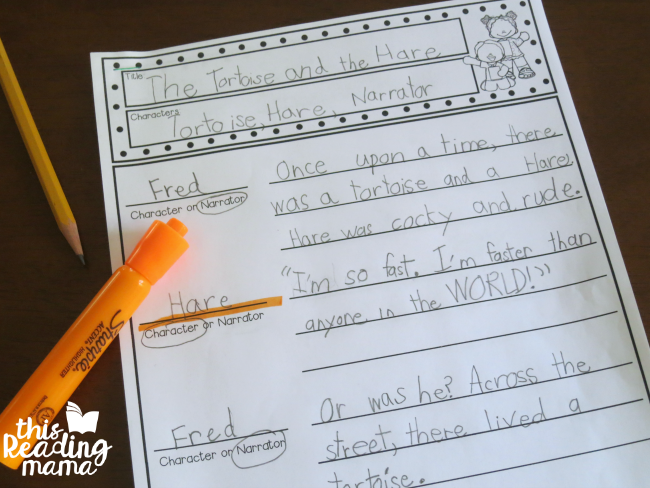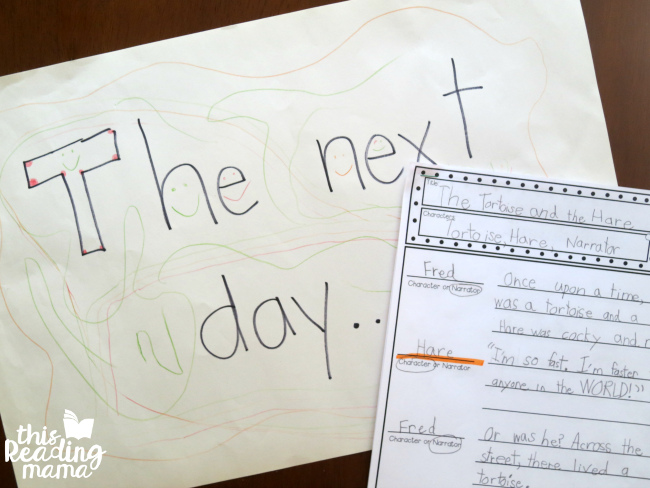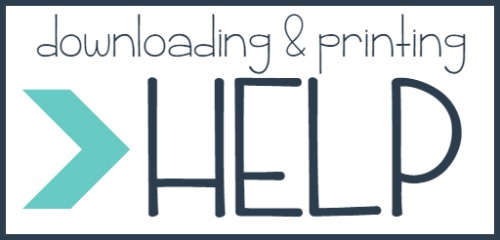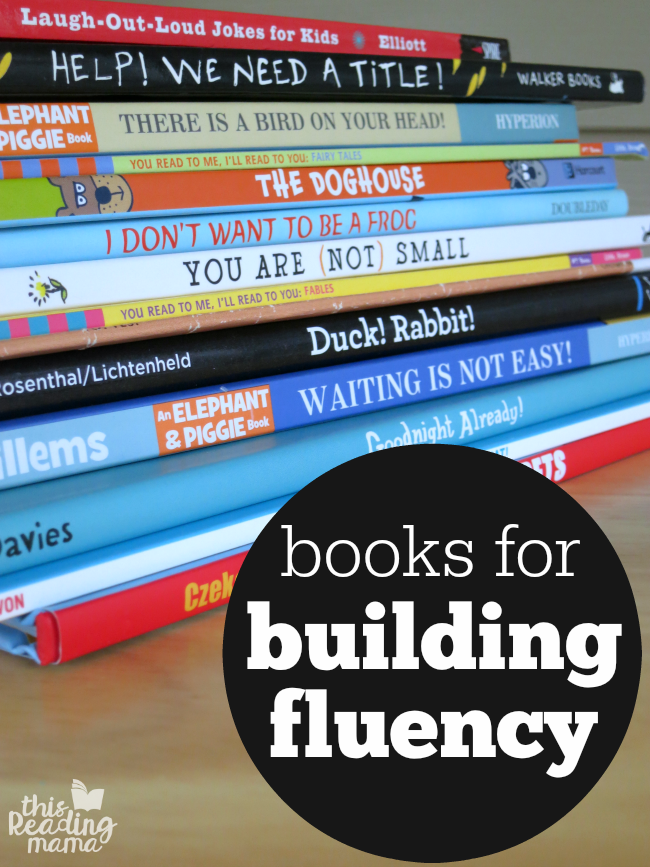Are you looking for an authentic way to work on writing/grammar, comprehension, and building fluency? Use these Blank Reader’s Theater Templates to write your own scripts with your learners!

*Grab the free printable reader’s theater downloads at the END of this post. Click on the teal download button.
**This post contains affiliate links.
Just recently, my three learners {1st grade, 3rd grade, and 4th grade} and I worked together to write a play adapted from a familiar fable. They practiced it several times, and then they performed it. There are many reasons why I loved this activity {and plan to do it again soon}.
When learners work to write their own script, they have to:
- Think about the story and rephrase it in their own words. {comprehension}
- Write down the dialogue for the characters. {writing & grammar}
- Think about their audience while writing.
- Practice their parts so they were ready to perform it for an audience. {a great way to develop reading fluency}
*I am a participant in the Amazon Services LLC Associates Program, an affiliate advertising program designed to provide a means for me to earn fees by linking to Amazon.com and affiliated sites.
8 Tips for Writing Reader’s Theater Scripts with Learners
Before you start working on your script, there are a few things to keep in mind.
1. Write your script with a small group of learners. It helps if they are more homogeneous in skill level, but this isn’t a must. For example, my 1st grader got a bit frustrated at times trying to keep up with all the writing, so I jumped in and wrote a few lines for her.

2. Pick a text your learners are already familiar with. You could pick a fairy tale, a fable {we used The Tortoise and the Hare}, or a familiar story. Just be sure you have enough parts for all your learners. You could even make up your own original play if you feel you and your learners are ready!
3. Give all learners a blank reader’s theater template. You want everyone to write down what they’re going to say.
4. Brainstorm ideas together. Rephrase ideas as needed before they are written down.

5. Ask learners to underline or highlight their parts. This helps them to follow along as they practice with each other.
6. Give learners time to practice. There’s no need to memorize lines, but lines need to be practice so that readers are reading them with fluency.

7. Don’t go overboard on props. Keep this SIMPLE. We only used rabbit ears {from a Halloween costume}, a turtle shirt {that we already had}, and two signs that my learners made for the narrator to use during the performance.
8. Find an audience. This is a MUST no matter who your learners are. This is the part that makes all the practicing and reading with fluency worthwhile.
Blank Reader’s Theater Templates
In the free file below, you’ll find two versions of the same Reader’s Theater template. These are the exact ones we used for our script.
Version 1 has the page numbers already at the bottom {1-10}. Just print, staple, and hand out to your learners.
Version 2 has blank circles at the bottom of each page where learners can write in their own page numbers. This helps if the script you plan to write is longer than 10 pages.






The link to download doesn’t work.
Did you try any of these tips? -> https://thisreadingmama.com/downloading-printing-help/